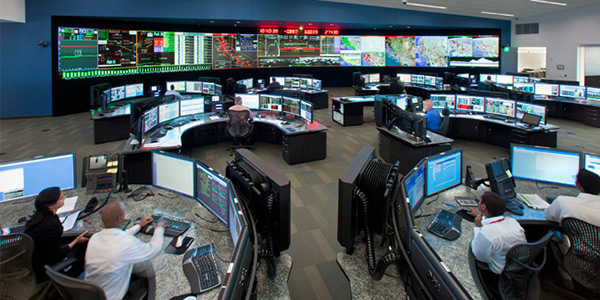By Hudson Sangree
CAISO is focused on keeping its control room running and isolating key employees from those who might be carrying the COVID-19 coronavirus, CEO Steve Berberich told the ISO’s Board of Governors Wednesday.
Some employees are working off site, Berberich said. Others have shifted to CAISO’s secondary control room at a 35,000-square-foot backup facility in Lincoln, Calif., about 20 miles north of the ISO’s Folsom headquarters near Sacramento.
“We’re doing our best to particularly make sure we protect our control room personnel and leveraging our backup site to make sure we have separation between them,” Berberich said. “Our focus though right now is to make sure we protect our staff but also ensure our primary missions of running the reliable grid and credible markets remains intact.”
Like other regions, CAISO has seen shifts in demand as a result of the coronavirus threat. The ISO has experienced a 3 to 5% load reduction, with Californians under a statewide stay-at-home order, he said. Mild weather and other factors may be disguising more pronounced effects on the state’s demand curve, he noted.
“We’re tracking that,” Berberich said. “I know [Vice President of Market Quality and California Regulatory Affairs] Mark Rothleder’s group is focused on making sure we take that into consideration as we make our forecasts.”
CAISO has had a pandemic plan in place since 2015 as part of its business continuity plan and has put it into effect, the CEO said.
The ISO is continuing with business as usual in other ways too, he said.
CAISO is continuing to perform its role as reliability coordinator for much of the West and running the Western Energy Imbalance Market, so far without significant disruption, he said.
However, Berberich acknowledged that some of RC West’s “advanced tools continue to be challenged.” CAISO’s advanced computer applications run contingency analyses based on a system model that is changing, he said.
“We’re working through some of the issues getting that system model completely correct,” he said.
“We do expect to move forward on all our policy initiatives,” Berberich said. “The stakeholder processes will continue to go forward on a telephonic basis. We’ll continue to manage the interconnection queue, transmission planning and all the other efforts we have to support California, but also the region and its decarbonization goals.”
He said developers have asked not to postpone projects, so CAISO won’t meddle with interconnection timelines.
“We are mindful that there are a lot of strains out there on the system — local regulatory authorities, the permitting agencies, financing and all those things,” Berberich said. “We are in a position where we will do what’s right to try to make sure that people can move through the queue, [that] they can successfully bring in projects and they can add to California’s goals of decarbonizing the grid.
“To the extent that we need to work with FERC and the stakeholders to find ways through that, we will. We have explored changing the queue dates and the schedules. After consulting with the industry, we got resounding feedback that they would like to keep those dates and requirements as is, so that will be our plan.”
Berberich plans to retire this summer, and a nationwide search has commenced for his successor.
Board Chair David Olsen took time at the start of Wednesday’s meeting to tell stakeholders that the ISO’s policy goals, including the expansion of the Western Energy Imbalance Market across the West and to a day-ahead market, won’t change during the CEO transition.
“That will not change any of our current commitments and forward-looking policies,” Olsen said. “The board wanted to communicate that unambiguously.”



